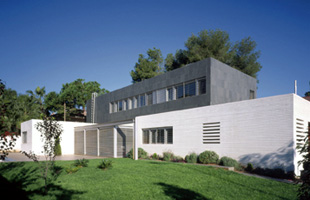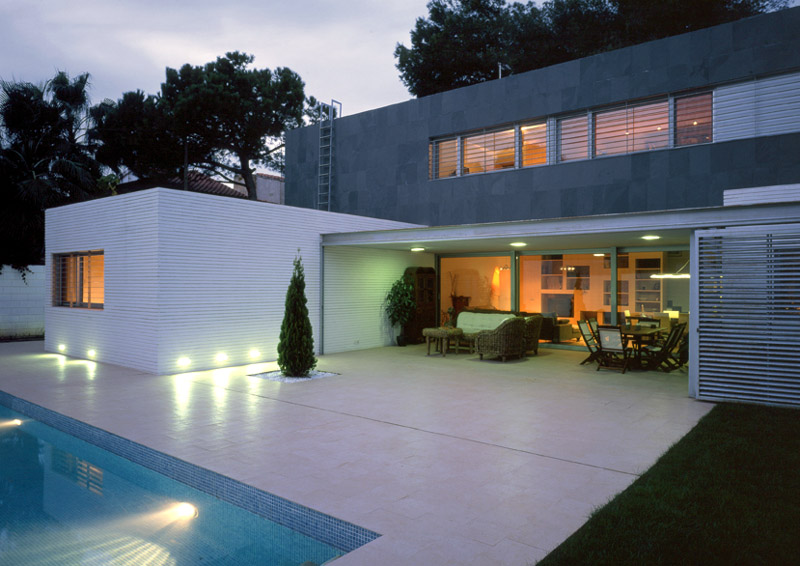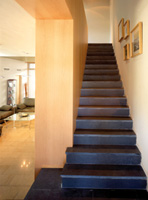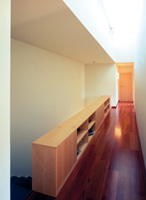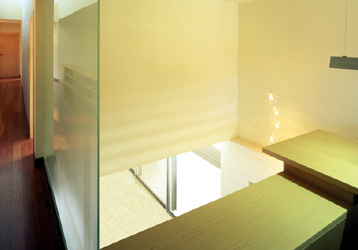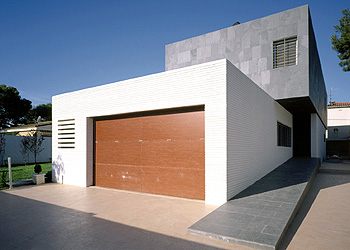|
La vivienda unifamiliar aislada
constituye una magnifica oportunidad de experimentación para permitir
avanzar y poner en orden la forma de la vida actual, la relación con la
naturaleza y la arquitectura que las sostiene.
La parcela de 858m2, plana, rodeada
de construcciones y sin ninguna vista, nos hizo concebir el proyecto como un
todo donde parcela y construcción fuesen parte de un ente superior,
eliminando las barreras entre ambas, creando una relación de complicidad.
|
The detached family home is a magnificent
opportunity to experiment in order to advance and put in order today’s
way of life, the relationship with nature and the architecture that
sustains both.
The 858 m2 plot, flat, surrounded by
buildings and without any views, made us conceive the project as a whole
in which plot and building are part of a greater body, eliminating the
barriers between the two and creating a relationship of mutual
involvement.
|
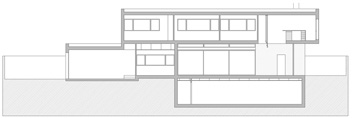
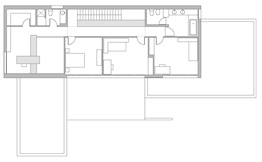
|
|
La organización espacial responde
al criterio de agrupar necesidades en contenedores autónomos; garaje,
cocina y lavadero; dormitorio y baño de los padres; zona de comunicaciones
y por último dormitorios de las hijas e invitados en un nivel superior.
Cada pieza adopta su posición, quedando un espacio entre ellas que ocupará
la zona de estar, espacio indefinido voluntariamente que disfruta de una
posición intermedia entre el interior y el exterior, con el que se comunica
a través de grandes paramentos de vidrio y una continuidad de materiales.
Este espacio de síntesis, aglutina
toda la vivienda, la organiza y permite una comunicación con el exterior.
La pieza superior como pieza que
macla el resto, se ha dispuesto un revestimiento en cuarcita negra,
aumentando la sensación de pieza que se apoya sobre el resto, recogiéndolo.
|
The spatial organisation responds to the
criterion of grouping needs into autonomous containers; garage, kitchen
and washhouse; parents’ bedroom and bathroom; communications area and,
lastly, the daughters’ and guest bedrooms on an upper floor. Each piece
takes up its position, leaving a space between them that will be occupied
by the living area, a voluntarily undefined space that enjoys a position
halfway between interior and exterior, communicating with the outside
through great stretches of glass and a continuity of materials.
This synthesis space draws the whole house
together, organises it and allows communication with the exterior.
The upper part, the piece that overlaps the
rest, is clad in black quartzite, increasing the sensation of a piece
resting on the others and drawing them together.
|
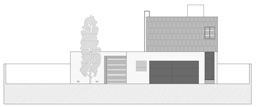
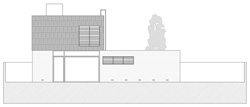
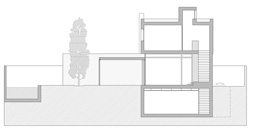
|

